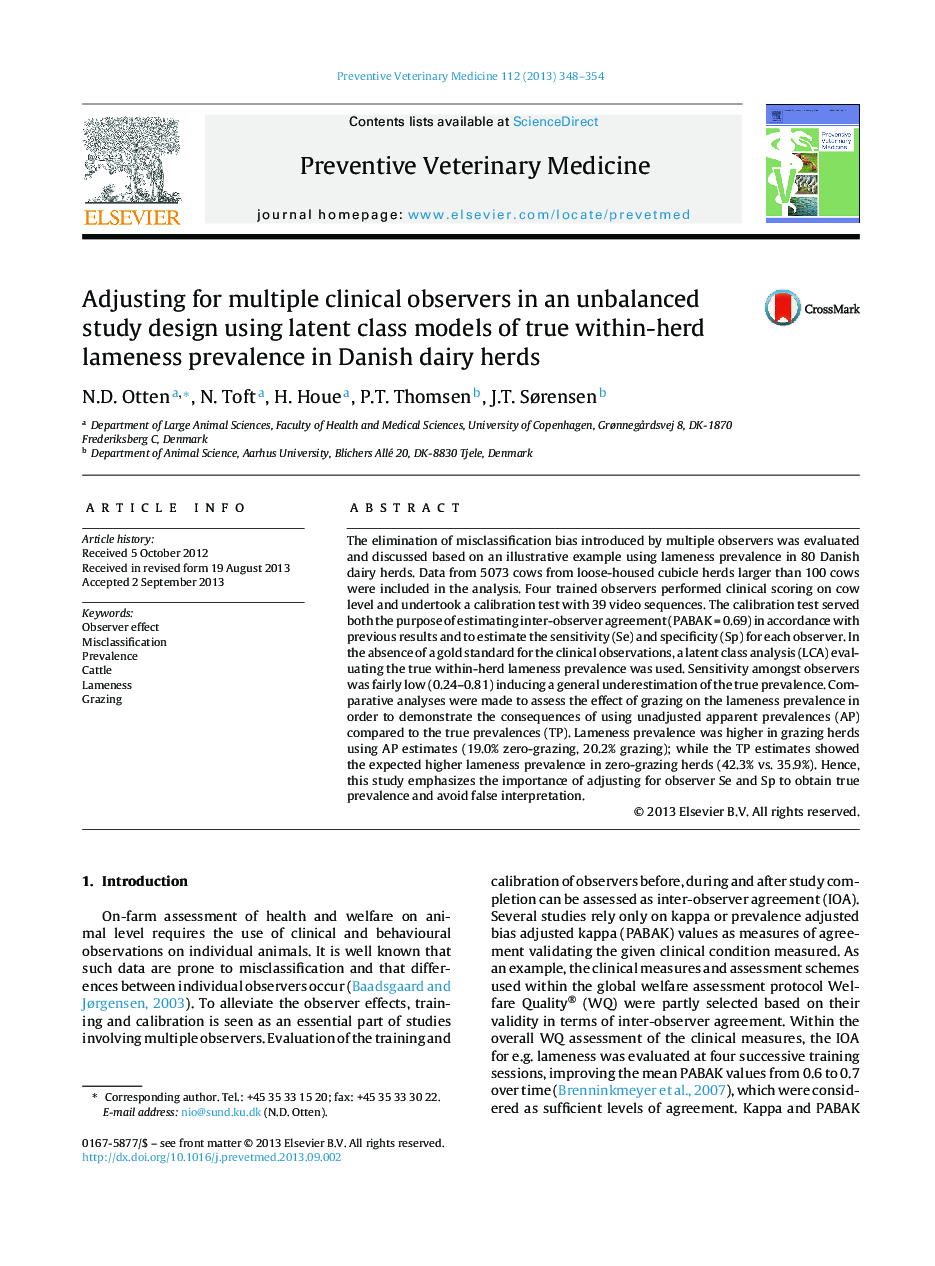| کد مقاله | کد نشریه | سال انتشار | مقاله انگلیسی | نسخه تمام متن |
|---|---|---|---|---|
| 5793638 | 1554178 | 2013 | 7 صفحه PDF | دانلود رایگان |
عنوان انگلیسی مقاله ISI
Adjusting for multiple clinical observers in an unbalanced study design using latent class models of true within-herd lameness prevalence in Danish dairy herds
ترجمه فارسی عنوان
تعدیل برای چندین ناظم بالینی در یک مطالعه نامتعادل مطالعه با استفاده از مدل های کلاس های پنهان واقعی شیوع انحراف در گله در گاوهای شیری دانمارکی
دانلود مقاله + سفارش ترجمه
دانلود مقاله ISI انگلیسی
رایگان برای ایرانیان
کلمات کلیدی
اثر ناظر، طبقه بندی نامناسب، شیوع، گاو، لنگش، گاو نر
موضوعات مرتبط
علوم زیستی و بیوفناوری
علوم کشاورزی و بیولوژیک
علوم دامی و جانورشناسی
چکیده انگلیسی
The elimination of misclassification bias introduced by multiple observers was evaluated and discussed based on an illustrative example using lameness prevalence in 80 Danish dairy herds. Data from 5073 cows from loose-housed cubicle herds larger than 100 cows were included in the analysis. Four trained observers performed clinical scoring on cow level and undertook a calibration test with 39 video sequences. The calibration test served both the purpose of estimating inter-observer agreement (PABAKÂ =Â 0.69) in accordance with previous results and to estimate the sensitivity (Se) and specificity (Sp) for each observer. In the absence of a gold standard for the clinical observations, a latent class analysis (LCA) evaluating the true within-herd lameness prevalence was used. Sensitivity amongst observers was fairly low (0.24-0.81) inducing a general underestimation of the true prevalence. Comparative analyses were made to assess the effect of grazing on the lameness prevalence in order to demonstrate the consequences of using unadjusted apparent prevalences (AP) compared to the true prevalences (TP). Lameness prevalence was higher in grazing herds using AP estimates (19.0% zero-grazing, 20.2% grazing); while the TP estimates showed the expected higher lameness prevalence in zero-grazing herds (42.3% vs. 35.9%). Hence, this study emphasizes the importance of adjusting for observer Se and Sp to obtain true prevalence and avoid false interpretation.
ناشر
Database: Elsevier - ScienceDirect (ساینس دایرکت)
Journal: Preventive Veterinary Medicine - Volume 112, Issues 3â4, 1 November 2013, Pages 348-354
Journal: Preventive Veterinary Medicine - Volume 112, Issues 3â4, 1 November 2013, Pages 348-354
نویسندگان
N.D. Otten, N. Toft, H. Houe, P.T. Thomsen, J.T. Sørensen,
